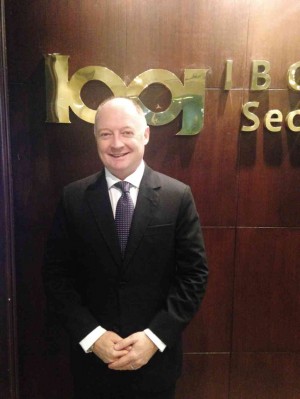Experts expect no glut in PH office space

Investing in office spaces is seen to become an increasingly attractive proposition for many developers, as the country continues to enjoy a steady influx of companies setting up shop in the Philippines.
A primary driver of the rise in demand for office spaces, according to property consulting firms Cushman & Wakefield Philippines Inc. and Jones Lang LaSalle Philippines Inc., is still the business process outsourcing (BPO) industry, as the country remains to be among the most attractive locations for offshoring services.
“The strength of the outsourcing and offshoring industry makes the office market an attractive investment choice for both local and foreign investors. Capital values have posted steady growth in Manila’s core business districts, vacancy rates remain low and the continued expansion of reputable multinational companies make the office sector an attractive option,” Joe Curran, general manager of Cushman & Wakefield, said in a report entitled “Asia Pacific Office Forecast 2015-16.”

The report noted that prime and Grade A office leasing demand continued to be positive in 2014 as new and existing outsourcing and offshoring firms continue to enter and expand their footprint in Metro Manila.
“This trend is expected to continue as the outsourcing and offshoring industry is forecast to remain as the primary growth driver of the office market. Nonetheless, we still see growing office demand from traditional corporate occupiers seeking to either relocate or consolidate office space in select key districts. This sustained office demand should be able to offset supply pressure from the large volume of future stock in the next two years, keeping vacancy levels relatively low and driving moderate rental growth,” the C&W report stated.
In a separate interview with the Inquirer, Curran noted that, apart from the BPOs, a strong office space demand would be supported by traditional companies like insurance, advertising and law firms, that are looking to consolidate their portfolios and come up with more efficient workspaces.

Phillip Anonuevo, local director for markets of Jones Lang LaSalle Philippines Inc., also said that the BPO industry would be the “main driver of growth as North American companies continue to find outsourcing and offshoring a viable business strategy for reducing operating cost.”
The BPO industry contributed roughly 6 percent to the local economy last year and had supported some 1 million jobs. By 2016, BPO employment is expected to reach 1.3 million and the industry is projected to account for almost 8 percent of the country’s gross domestic product.
“Banking and financial services are likewise seen to contribute to the growth of the office market, as more licenses are granted to foreign banks. So will companies from various industries who have been well established in the Philippines. For example, Coca-Cola consolidated their Manila and Makati offices back in 2013. Recently, Unilever has planned to do the same,” Anonuevo said in an
e-mail to the Inquirer.
Adequate inventory
For this year alone, new office space supply is expected to hit between 600,000-700,000 square meters, according to estimates by C&W and JLL.

“We see about 600,000 sq m of prime and grade A space [for 2015], and that’s going to be added to the total office stock by the end of the year. A total of 2.1 million square meters of new office space will be added between 2015 and 2017, and we will see most of that space being absorbed by the market,” Curran said.
Office space supply “will slightly outpace demand, but not by a huge amount. So we don’t see a huge glut in supply, which is probably one of the most important things from a developer’s standpoint,” he added.
The vacancy rate for office space stood at 4.4 percent in 2014, C&W said, adding that the rate could slightly grow to 4.7 percent this year.
Anonuevo meanwhile noted that, of the 700,000 square meters of office space that JLL expects to be built in Metro Manila this year, about 362,000 square meters will be located in Makati and Bonifacio Global City (BGC).
“Ninety percent of tenants outside of Makati and BGC will continue to come from the BPO industry, which currently employs more than 1 million. On the other hand, the tenant mix in Makati and BGC will continue to have a healthy proportion of corporate offices and BPOs, both contributing 50 percent each of demand for office space,” Anonuevo said.
BGC and Makati, he added, have enough space to address the real estate requirements of corporate offices over the medium term.
But he cautioned real estate developers currently putting up office buildings to spread development over a longer period so that annual construction of office space will be above expected take up.

Throughout Metro Manila, the office space being planned and under construction, is reportedly almost two times the current demand for office space, Anonuevo claimed.
Emerging locations
“The buildings in the best locations are fully leased and the buildings in the prime central business districts and satellite districts are leased out within less than one year of completion, in many cases,” Anonuevo said.
Curran added that while there remained enough room in Metro Manila to cater to the growing demand for office space, there are also other emerging locations outside the metropolis that are being tapped largely by the BPO industry. These areas include Clark, Cebu, Davao, Iloilo and Bacolod, which have been generating increased interest, particularly from among offshoring companies.
What are largely in demand are IT-capable buildings that can cater to the growing requirements of outsourcing and offshoring firms. Also, corporate tenants are now starting to look for buildings that permit a higher density in anticipation of future internal growth.
One developer that is expected to provide this additional office space is Rockwell Land, which is offering a total of 18,022.17 square meters of office space at the 18-story 8 Rockwell.
Registered for LEED gold certification, 8 Rockwell will offer unit cuts of 448 sq m to 1,791 sq m, priced at P1,200 per sq m a month. Companies may start leasing this year as the units are expected to be turned over in the third quarter of 2015.
Alveo Land of the Ayala group meanwhile is putting up The Stiles Enterprise Plaza—a two-tower, grade A, LEED-certified office condominium development located at the Circuit Makati.
The Stiles Enterprise Plaza will offer a total of 283 units under the first phase of the project called West Tower. This 29-story building will provide 27,345 sq m of office space, with unit cuts ranging from 79 sq m to 180 sq m. Units, priced from P10.6 million to P25.8 million, will be turned over by the third quarter of 2019.
Moderate increases
At present, the central business districts of Makati, BGC and Ortigas remain the preferred location of corporate offices, especially the multinational companies. Despite the strong demand, the increase in rental or lease rates are expected to be moderate, tempered largely by the availability of supply.
“We see lease rates increasing moderately over the next 12 to 24 months … between 3 and 5 percent. Over the past three years, the increases were higher, reaching even 15 percent, because there hasn’t been the same amount of supply then as we’re going to see in the next three years,” Curran said.
Rental values across all business districts in Metro Manila, according to C&W, had averaged P968 per sq m a month. This year, it is expected to slightly growth to a little over P1,000 per sq m a month.
Curran clarified that there are some areas that would fetch lower rates, while others would command higher prices such as Makati, where grade A space can cost as much as P1,200 to 1,400 per sq m a month.
Makati will continue to command the highest rental rates, Anonuevo said, although the upcoming buildings in Bonifacio Global City are now priced similarly to Makati buildings.
“We expect the big developers to continue building in CBD locations and new townships,” he said.
“For corporate offices, the Philippines is certainly more competitive in terms of Grade A office rents. Grade A buildings in Makati and BGC will be leasing at P900 to P1,000 per sq m a month, while average rents in Hong Kong are north of P5,000 per sq m a month. Singapore rents are north of P2,500 per sq m a month. For the BPO [industry] however, we face competition from India, which is now moving into Tier 3 cities for more cost reduction, and the Malaysian government is offering cyberparks priced below our BPO buildings.”
Addressing constraints
What will be crucial now, according to both property consulting firms, is for the Philippine government to address some pressing issues that may hamper the sustained robust growth of the local economy and, consequently, the take-up for office space.
“The cost of power is one of the biggest constraints, and I have heard from several senior executives of BPOs that, in this aspect, we are less competitive than Malaysia,” Anonuevo said. “Traffic congestion in Metro Manila will continue to be very heavy. The government and private sector both need to encourage the leading universities to expand their campus to the North and South to encourage families to emigrate to the greater Metro Manila area in the mid- to long-term.”
Curran on the other hand, underscored the need for consistency in government policies, particularly fiscal incentives, along with accessibility and adequate infrastructure.
“Accessibility is another constraint, as well as infrastructure. Right now, you have all these fantastic pocket developments, each of them being world class. If you look at places like Global City, Makati, Ortigas, Rockwell, and the Bay area, it’s now all about how you link all these fabulous developments together so you can move seamlessly from one city to the next without getting caught in traffic. That’s a constraint for now,” Curran said.
